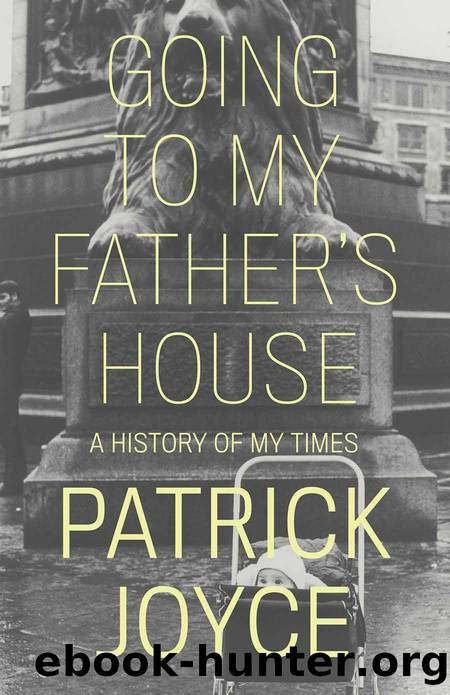Going to My Father's House by Patrick Joyce

Author:Patrick Joyce
Language: eng
Format: epub
Publisher: Verso Books
This Padua on the Foyle was nonetheless a war machine, a gigantic device for exercising physical and symbolic domination. In the Troubles, the British Army erected enormous surveillance towers on the heights of the walled city, looking down on the Catholic Bogside and Creggan below.
The walled city of Derry, west at top of plan.
Reproduced here is a map of the modern walls of Derry, and the surveillance of the Catholics below that would have been going on over the years would have been mostly from this side, to the west. The bastions on the walled town along this side are marked left to right: Magazine, Gunners, Royal, Double, with the gates Castle and Butcher. On the right side of the plan is Shipquay Gate (opening north), and on the left Butcherâs Gate (looking south) â the business sides of the walls, as it were. The space enclosed by the walls is fairly small, far from Paduan size â the circumference only 1.6 km. Though the streets are few, some are long, the houses and other buildings close together. The plan is a slightly anachronistic one for my purposes, for in the top-right corner is something marked âcraft villageâ, part of the attempted post-war regeneration of a once devastated city. The map is itself a tourist product â a fact that is relevant to the history, the anachronism useful now. I hope this plan will situate the place for the reader, as I wish to write about some of the points on these walls.
The religious and political geography of the place was once simple: the Foyle lies to the right, and so to the north on the map, though the river quickly bends to the east and so runs along the bottom of the map, and it is schematically marked. Ferry quay and Waterside bastions will be noted at the bottom of the map (the city is oriented to the north-east). Until Catholics began to move over to the east side after the end of the conflict, the east side, âWatersideâ, was Protestant-Unionist. The west side, âCitysideâ, was and is Catholic and Nationalist. The epicentre of Protestant-Unionist âheritageâ, St Columbâs Cathedral, is marked in the bottom left-hand corner, the much-bombed Courthouse above it. One other of the three main âProtestantâ sites is marked, the Church of St Augustine, towards the top â but not what is near to it, the Apprentice Boys Memorial Hall. There are no âCatholicâ sites.
The Foyle itself was a wall of sorts. There is now a âPeace Bridgeâ over it, but when you walk over it to the east you are very quickly in the parade ground of Ebrington Barracks, built first in 1841 and named after the lord lieutenant of Ireland, Hugh Fortescue, Viscount Ebrington. During the conflict, Ebrington was the headquarters of the 8th Infantry Brigade, which had fought in the two world wars. The barracks came under attack in the conflict. It is hard to walk away from history here, the sign of peace that is a bridge being also a reminder of war.
Download
This site does not store any files on its server. We only index and link to content provided by other sites. Please contact the content providers to delete copyright contents if any and email us, we'll remove relevant links or contents immediately.
Machine Learning at Scale with H2O by Gregory Keys | David Whiting(4106)
Never by Ken Follett(3762)
Harry Potter and the Goblet Of Fire by J.K. Rowling(3759)
Unfinished: A Memoir by Priyanka Chopra Jonas(3316)
Fairy Tale by Stephen King(3193)
The Man Who Died Twice by Richard Osman(2979)
Will by Will Smith(2770)
Rationality by Steven Pinker(2273)
The Dark Hours by Michael Connelly(2218)
It Starts With Us (It Ends with Us #2) by Colleen Hoover(2175)
The Storyteller by Dave Grohl(2152)
Can't Hurt Me: Master Your Mind and Defy the Odds - Clean Edition by David Goggins(2150)
The Dawn of Everything: A New History of Humanity by David Graeber & David Wengrow(2105)
Friends, Lovers, and the Big Terrible Thing by Matthew Perry(2100)
The Becoming by Nora Roberts(2062)
The Stranger in the Lifeboat by Mitch Albom(2032)
Cloud Cuckoo Land by Anthony Doerr(2013)
Einstein: His Life and Universe by Walter Isaacson(1953)
Love on the Brain by Ali Hazelwood(1934)
